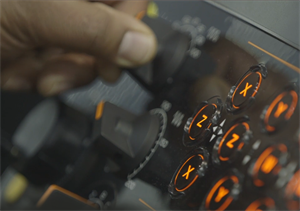In most situations, it's possible to define the workpiece geometry in CAD and then export it into the CAM system. This saves a lot of time when processing complex parts because the operator doesnt have to duplicate the effort of creating the geometry.
What CNC Programming Style Best Suits Your Operations?
Contributed by | Mazak Corporation
In the most basic sense, the functionality of a CNC is to enable a machine tool to achieve automatic, precise and consistent motion control. To do this properly, the CNC requires a set of programming instructions that tells the machine how to run a part.
 When it comes to developing these instructions, you have three programming styles to choose from: manual, conversational and CAM. Each has its own special niche and unique set of pros and cons so that no particular style is right for every company. Therefore, it’s important to understand the basic fundamentals of these styles when determining which one best suits your needs.
When it comes to developing these instructions, you have three programming styles to choose from: manual, conversational and CAM. Each has its own special niche and unique set of pros and cons so that no particular style is right for every company. Therefore, it’s important to understand the basic fundamentals of these styles when determining which one best suits your needs.
1. Manual Programming
Manual programming involves numerous calculations and verifications without the use of a computer. The programmer must program in the same language the CNC machine will execute, creating a step-by-step order of commands that make the machine run accordingly. This requires the programmer to visualize the machining operations that will carry out the part program.
Considered old school by many who prepare part programs via computer, manual programming is still highly viable in parts machining. After all, it’s directly applied in CAD/CAM programming. And, while it’s no secret automated CAM system programming is a lot easier than manual techniques, modern CNCs have simplified the manual approach by using fixed or repetitive machining cycles, variable type programming and graphic tool motion simulation.
CNC programming is essentially an art form so it can never be fully automated. Only through manual programming is it possible to have complete control over a part program — no computer will ever have the instinct that’s inherent to humans. A well-formatted manually written program will optimize a machine’s performance better than any computerized method.
Through manual programming, machines can achieve extremely accurate tool paths as well as effectively apply parametric programming techniques. Additionally, operators versed in manual programming can troubleshoot and fix problems associated with tool paths created by a CAM system. Some shops even swear by manual programming because it teaches discipline (e.g., continuous concentration and constant evaluation), a quality every good CNC programmer must possess.
Generally speaking, in a highly competitive industry where minutes matter, manual programming is best left for simple jobs, leaving it up to a CAM system to bring the speed to complex work. Manual programming, however, is the best option for ultra high-volume work and an absolute must for applications that require the CNC program to be as optimized and accurate as possible.
Pros
- Accomplishes the best machine utilization enhancements (e.g., cycle time reduction)
- No other method has the same level of intimacy with a CNC machine
- Virtually unlimited freedom in part program development
- Outputs CNC programs more efficiently than most CAM systems
Cons
- Tedious, time-consuming manual calculations and verifications
- Numerous calculations increase the risk of human error
- Intense process that requires total involvement of CNC programmer
- Shortage of workers able to program at this level
2. Conversational Programming
Perfect for entry-level operators, CNC machines with conversational programming capabilities feature a wizard-like mode that either hides G-code or completely bypasses its usage.
With conversational programming, operators can easily generate part programs at the machine in mere minutes. The operator simply walks up to the CNC, with the part design in hand, and populates a series of built-in data prompts, involving part geometry, workpiece material and tooling, etc. From there, the CNC pretty much takes over and puts the machine in motion. Keep in mind, however, conversational programming is best suited for simple part geometries — those that take 30 minutes or less to program.
Furthermore, it’s often best to use conversational programming when the machine is in setup mode. For example, if a shop does a lot of work involving very short cycles times or deals in small lot sizes, it’s next to impossible to prepare programs for subsequent jobs when the machine is running production.
Most CNCs with conversational programming allow operators to graphically check and verify the tool path before production begins. Program editing is also easy as all the operator has to do is recall the cycle and change the variable to modify or fix the program.
Generally speaking, conversational programming is like telling a friend to meet you at the corner of Central and Main Streets, and he takes care of the driving specifics. G-code programming, on the other hand, involves guiding your friend to the destination in a highly detailed step-by-step manner.
Pros
- Easy to learn and simple to use
- No G-code to decipher
- Reduced setup and programming times
- Fewer programming errors and reduced scrap
- More cost effective than a CAM system
Cons
- Limited to more basic part geometries
- Unable to support complex tool paths
- Does not offer the flexibility of a CAM system
3. CAM System Programming
With the cost of CAM systems being more reasonable these days, shops short on highly skilled machinists can’t afford not to have one in their CNC toolkit. After all, a CAM system automatically generates the G-Code language responsible for controlling the CNC machine.
While each CAM system is different, they all tend to hold the operator accountable for inputting the same basic information, including part name, part number, workpiece geometry and the type of machining operation being applied.
CAM system programming comes in handy in situations where an operator has a variety of machine models to program and has trouble keeping the language for each one straight. It also proves effective in complex jobs that are difficult to manually program.
In most situations, it's possible to define the workpiece geometry in CAD and then export it into the CAM system. This saves a lot of time when processing complex parts because the operator doesn’t have to duplicate the effort of creating the geometry.
A CAM system, however, cannot do everything. It usually can only produce a program that’s very close to the desired outcome — and very close isn’t always acceptable. Plus, there are situations where successful use of this programming style requires the operator to understand manual programming methods. For instance, if an operator needs to edit programs at the machine during the verification process, he/she must know manual programming techniques to be able to do so.
Essentially, an operator only familiar with CAM system programming is akin to using a calculator without understanding basic math. There are operators out there, however, who manage to successfully create programs and machine good parts relying exclusively on a CAM system.
Pros
- Does not require operators to perform math calculations
- Automates the programming process for an overall boost in total output
- Virtual simulation reduces machine crashes due to programming errors
Cons
- Efficient programming management still requires basic manual programming knowledge
- Operator does not have ultimate control over the machining process
- Program output is less efficient than manual techniques
Whatever your shop’s specialty, it’s important to make sure you’re utilizing the best programming method in your operations. So, should you have questions or need advice, please don’t hesitate to contact us about any of these programming styles. And, don’t forget, we offer MAZATROL programming classes at our various Technology Centers as does ToolingU.
About Mazak Corporation
Mazak Corporation is a leader in the design and manufacture of productive machine tool solutions. Committed to being a partner to customers with innovative technology, its world-class facility in Florence, Kentucky, produces over 100 models of turning centers, Multi-Tasking machines and vertical machining centers, including 5- axis models. Continuously investing in manufacturing technology allows the Kentucky iSMART Factory to be the most advanced and efficient in the industry, providing high-quality and reliable products through its “Production-On-Demand” practice. Mazak maintains eight Technology Centers across North America to provide local hands-on applications, service and sales support to customers.
The content & opinions in this article are the author’s and do not necessarily represent the views of ManufacturingTomorrow
Comments (1)
Featured Product

